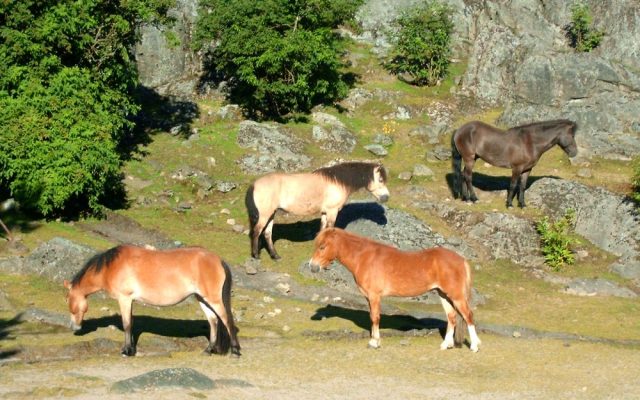Type the name of the breed you're looking for below
[wpdreams_ajaxsearchlite] Don't see the breed your're looking for? Click here and let us know!
Gotland pony
| Country Of Origin | Sweden |
| History and Background | The name russ comes from a now obsolete word ross, which means a riding horse or a charger and it is linked etymologically to the English word horse (in Old High German this word appeared as hros, and in English a metathesis has switched the places of the /r/ and the /o/, whereas in Swedish /hr/ went to /r/, producing ross or russ. This breed of horse resembles the Hucul and Konik of Poland. Like those horses, aficionados claim the Gotland Russ descended from the Tarpan, though this is unlikely and DNA studies indicate the pattern of development was akin to most other landrace breeds, where domesticated stallions were crossed on local indigenous mares. Once the Gotland ponies lived wild on the island. Nowadays a semi-feral herd is kept in the 650-acre (2.6 km2) enclosed area of Lojsta Moor where the horses live all year round. In the beginning of the 19th century Gotland ponies still lived everywhere on the island, but due to logging and the increasing cultivation the number ponies had begun to lessen menacingly. Plenty of ponies were also taken to the manner Europe, and around 1870 they were sold 200 per year. They were transported all the way to Great Britain and Belgium where they were used in coal mines. Extinction of the breed was avoided when the ennobling society was founded in Sweden. To the society's merit the moors and forests of Lojsta were protected for the ponies to live in. The first pedigree-book for Gotland ponies was opened in Sweden in 1943. To improve the breed two Wales pony stallions have been accepted in it: Reber General and Criban Daniel. The pedigree was closed in 1971 after which only registered Gotland ponies have been accepted in it. Today, they are mainly bred in Sweden, Denmark, Finland, Norway and North America. |
| Use Today | Riding pony, Eventing pony, Harness pony |
| Height | 12-14 hands high (48-56 inches, 122-142 centimeters) |
| Colour | Any colour |
| Characteristics | The Gotland Russ has a light and narrow build with sloping quarters and a low-set tail. Their hooves are good and hard. The pony is strong and hardy, and can be ridden by children and small adults. Wildtype bay and mealy (Pangare) are very common in the breed. Common colours include bay, chestnut, black, buckskin, and palomino, but all colours except for dun, grey, and pinto, are allowed. Bay or black is usually preferred. |
| Personality and Temperament | The Gotland breed is usually very friendly. They are easy to control and very caring animals. These horses are used as riding ponies in parks, but they are primarily used for farm work. Gotlands, being spirited animals, are known to survive in very unfavorable conditions. This breed exhibits exuberance and an exceptional gait that riders really enjoy. |
| Other Considerations | The Gotland Russ is the most common breed of pony in Sweden. It is a good all round pony and is often used by riding schools. Modern Gotlands are most popular as a riding ponies, often for children, and as harness racing ponies. They also excel at show jumping, dressage, and eventing. The Gotland is considered to be a very quick learner, and described as easy to train. |



